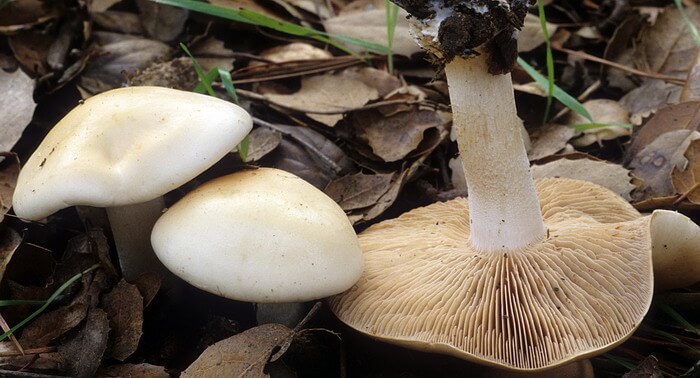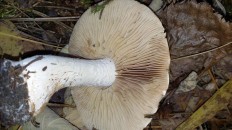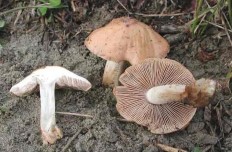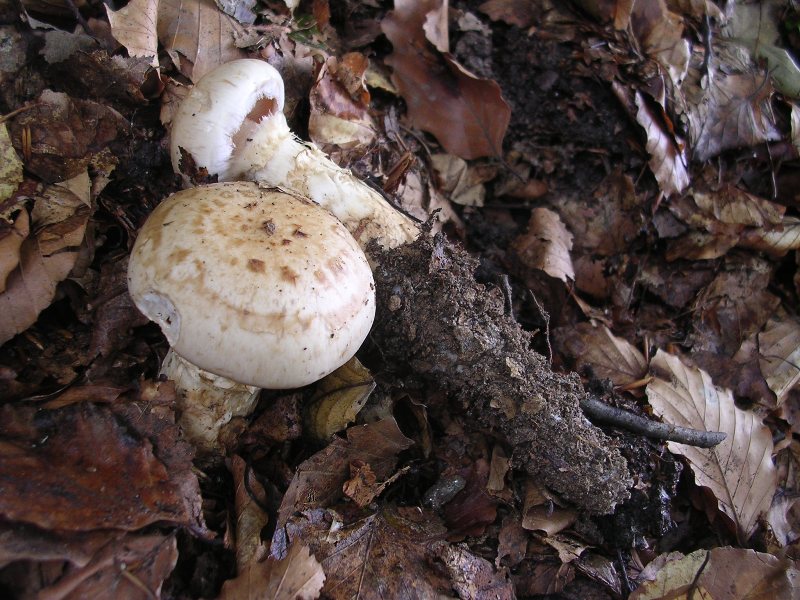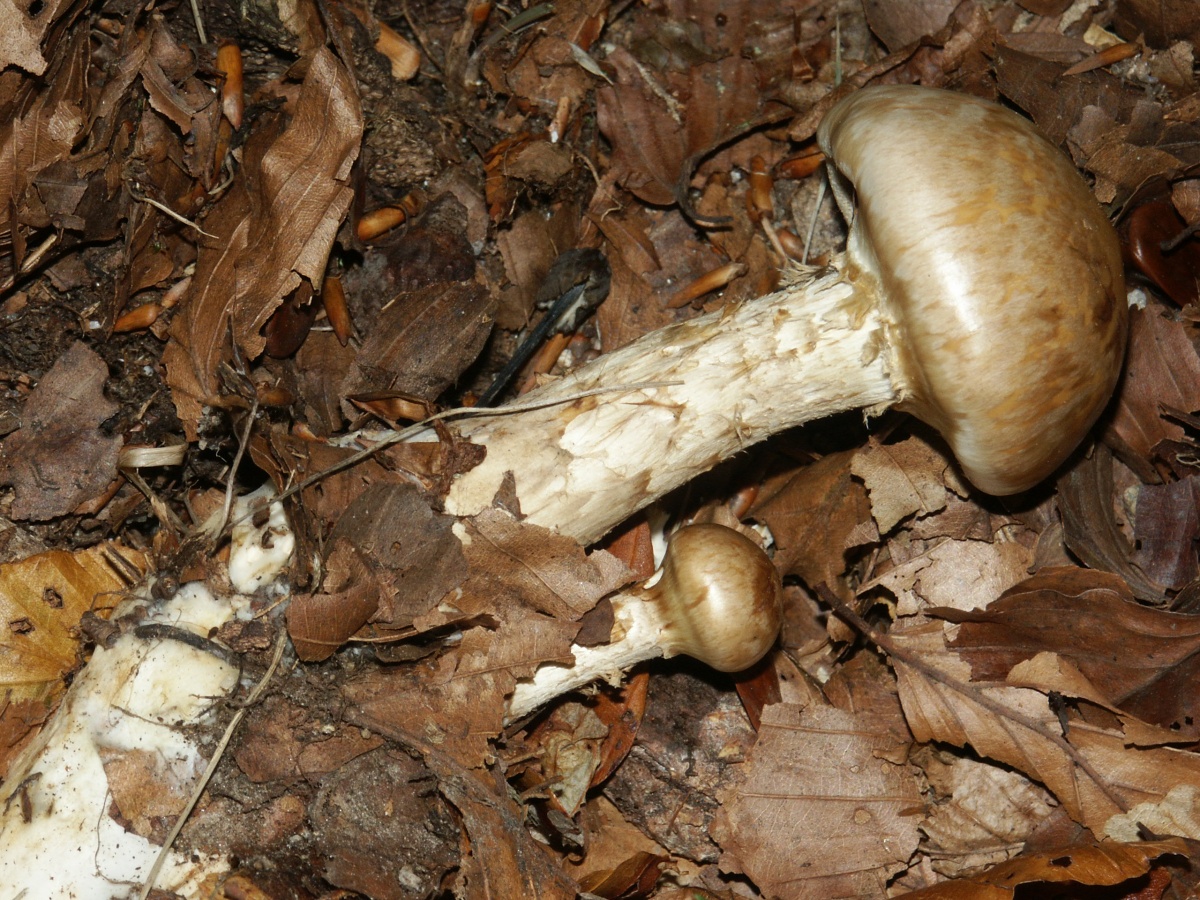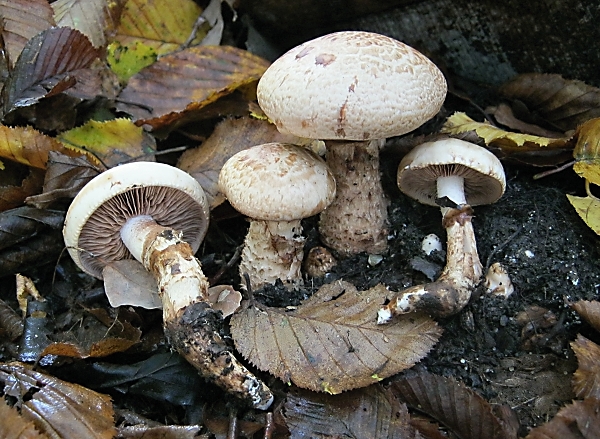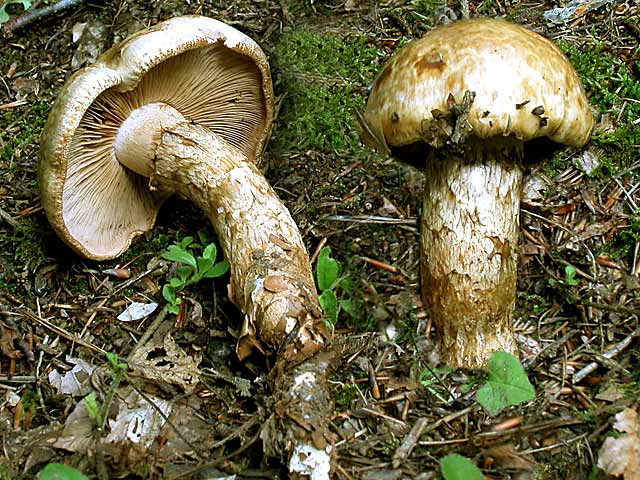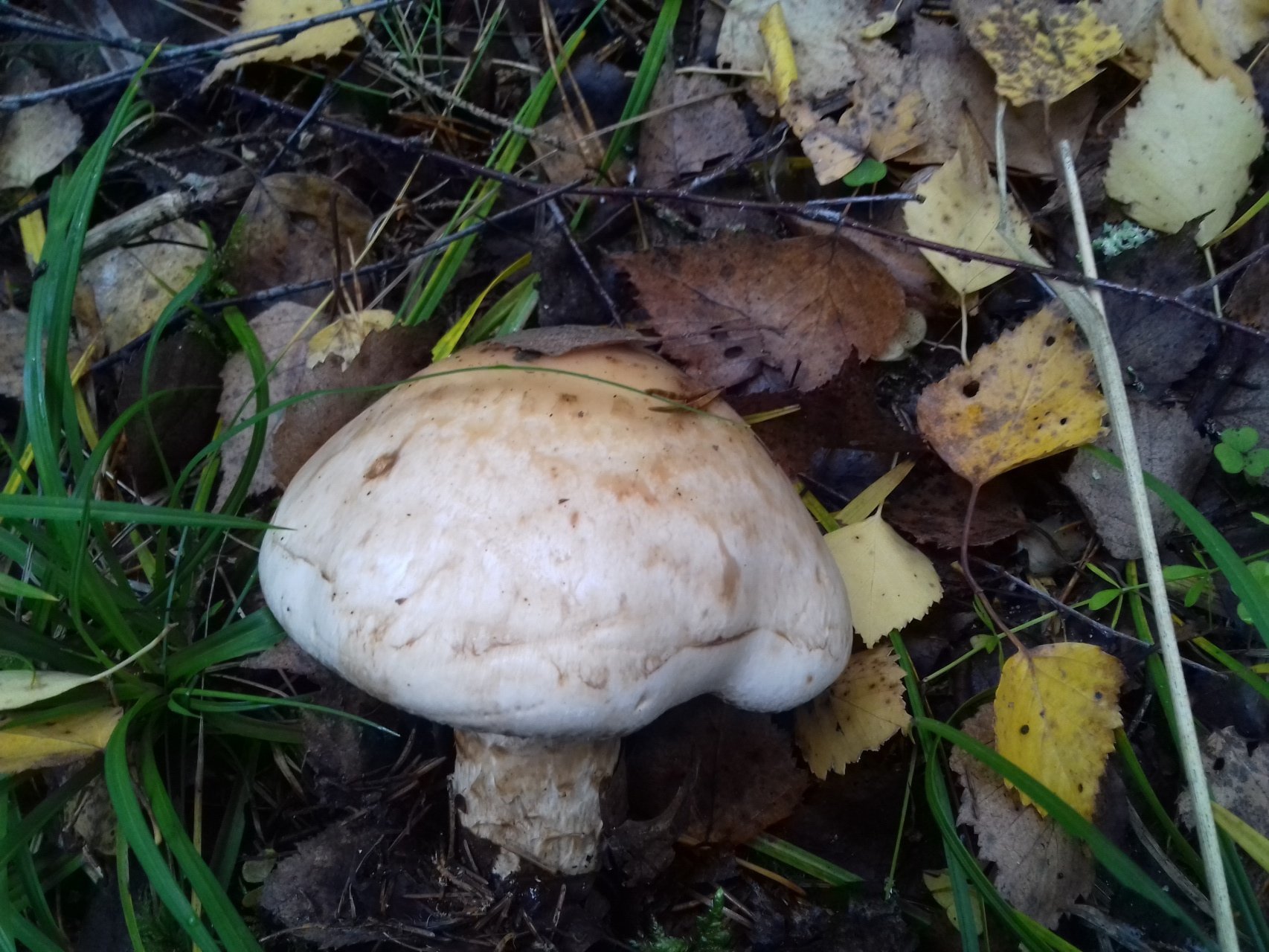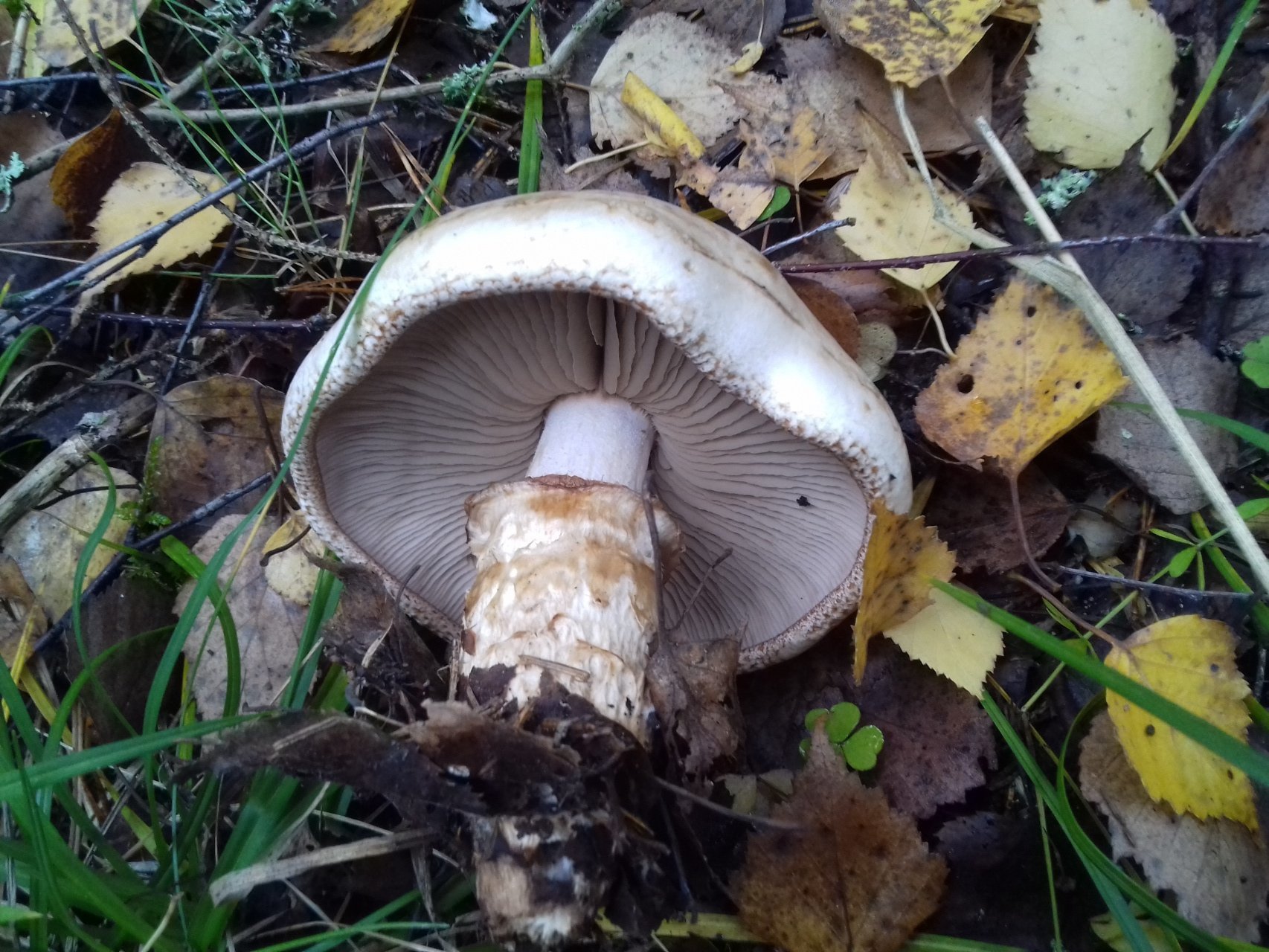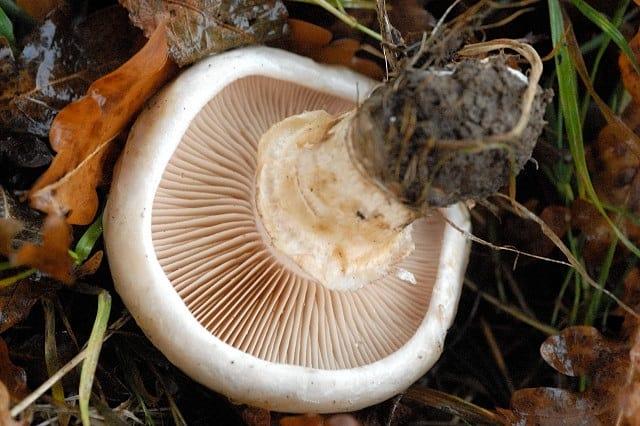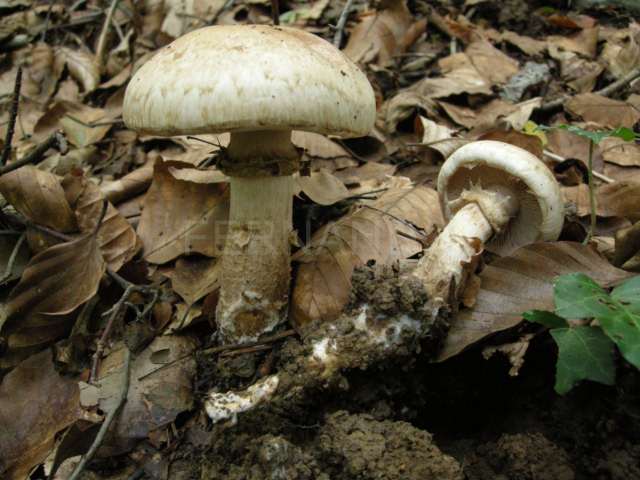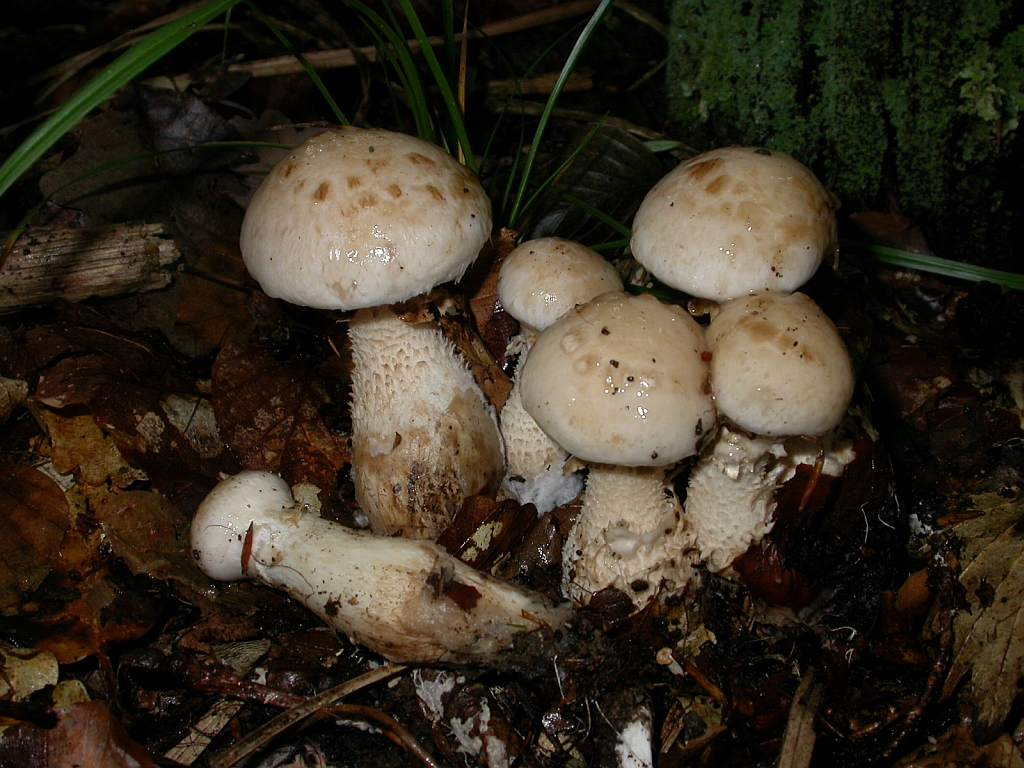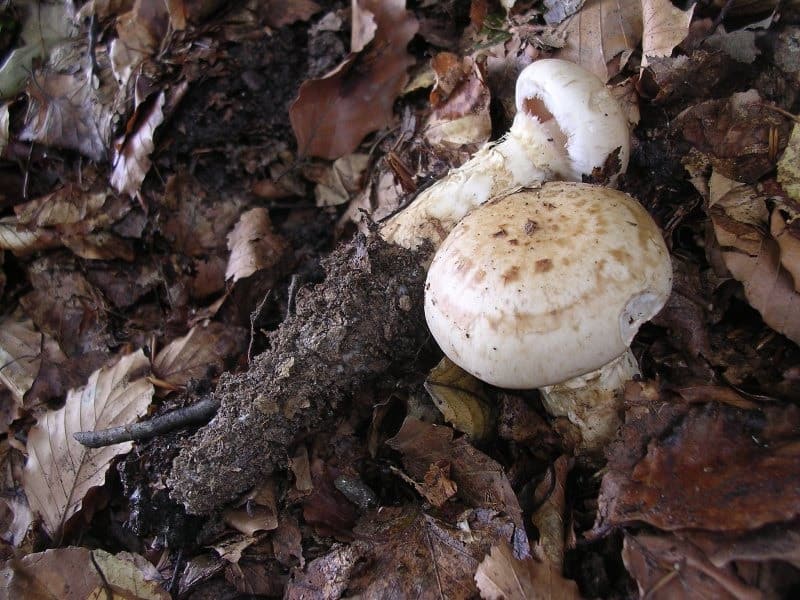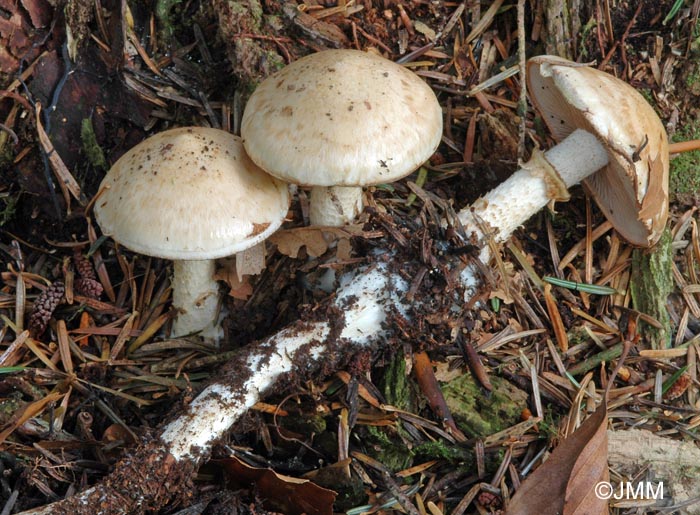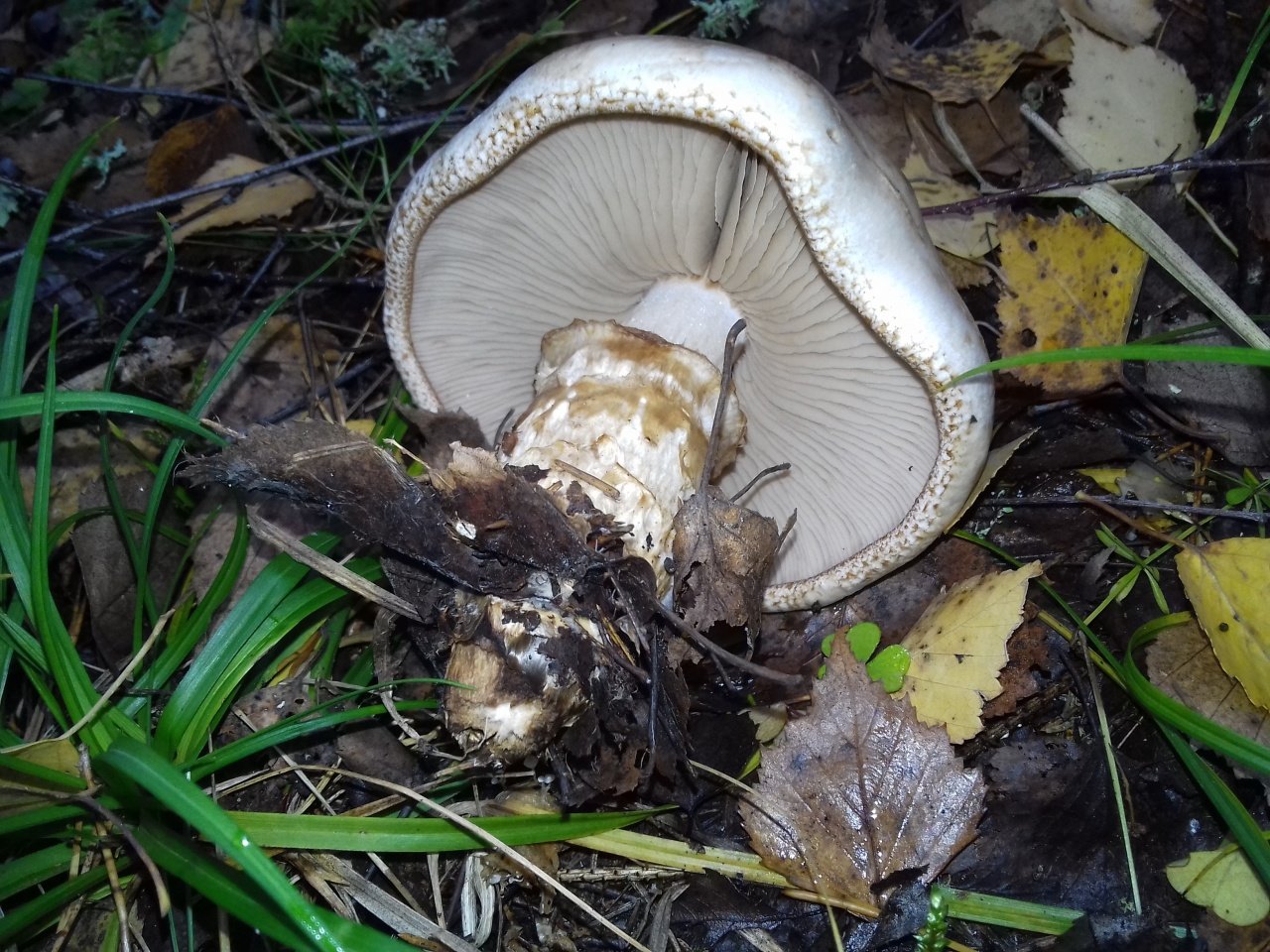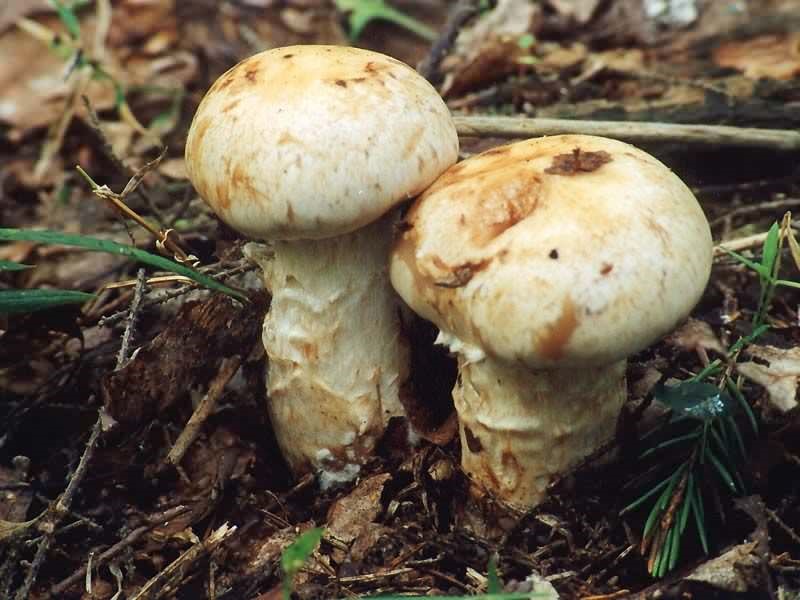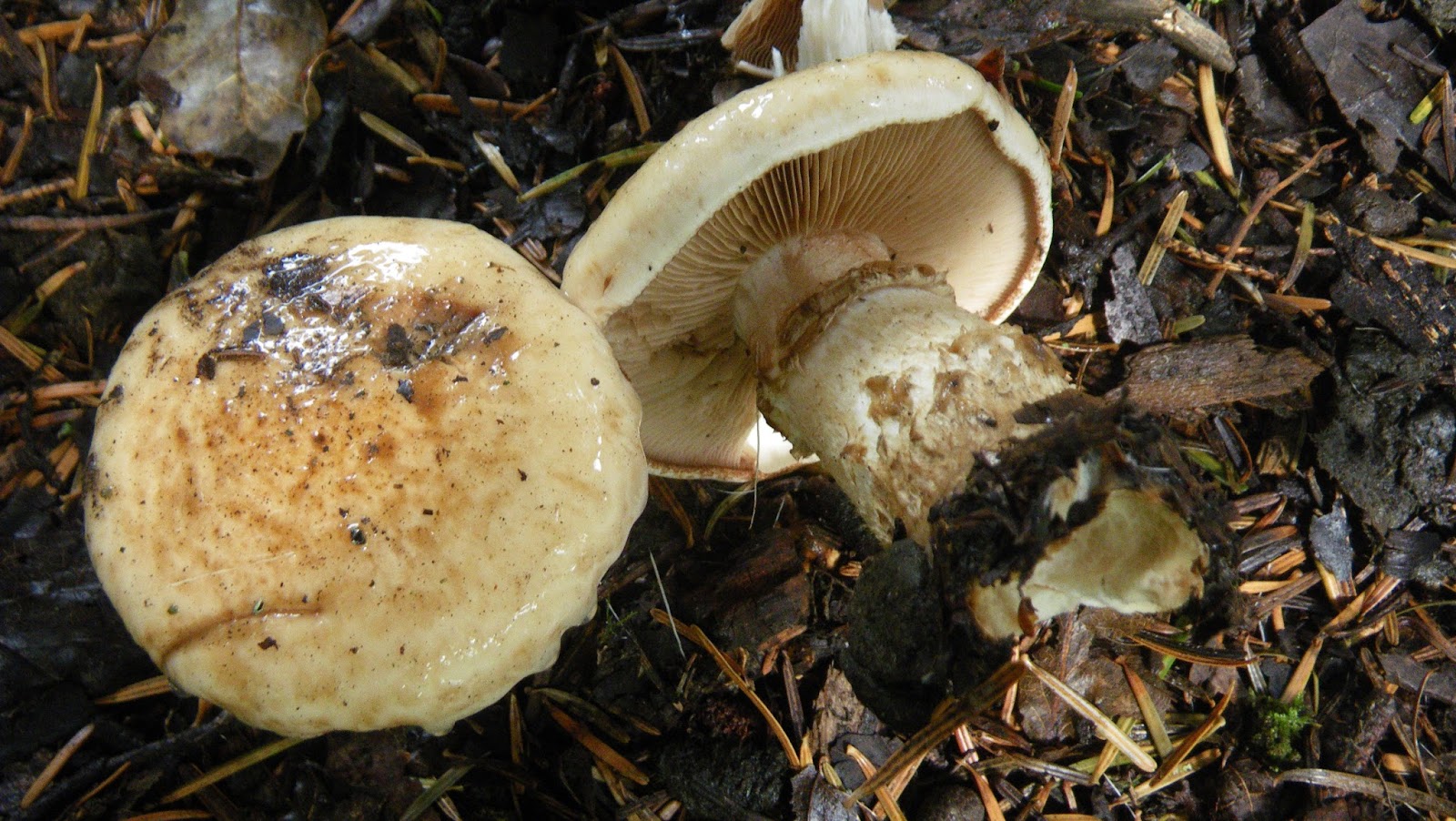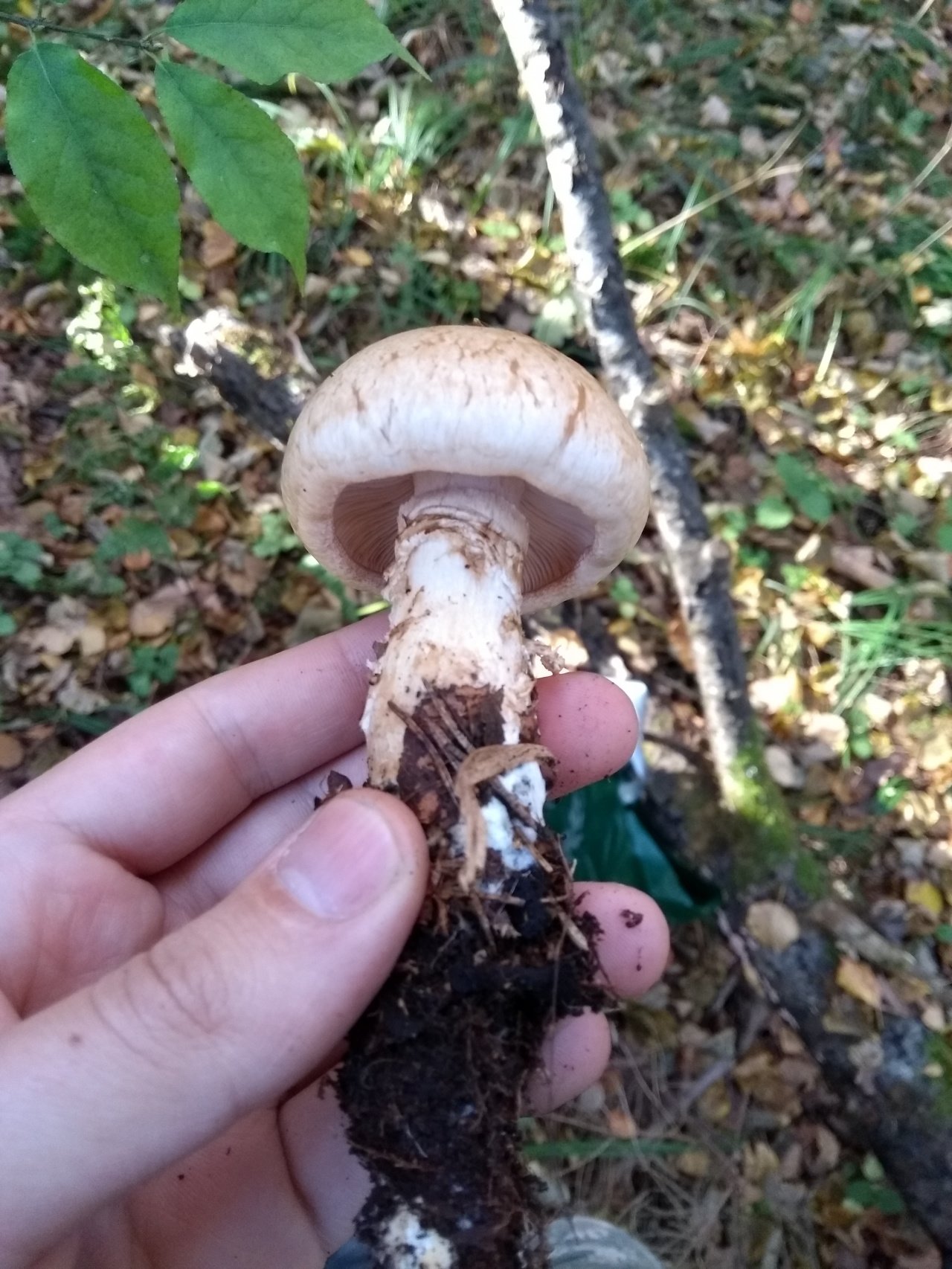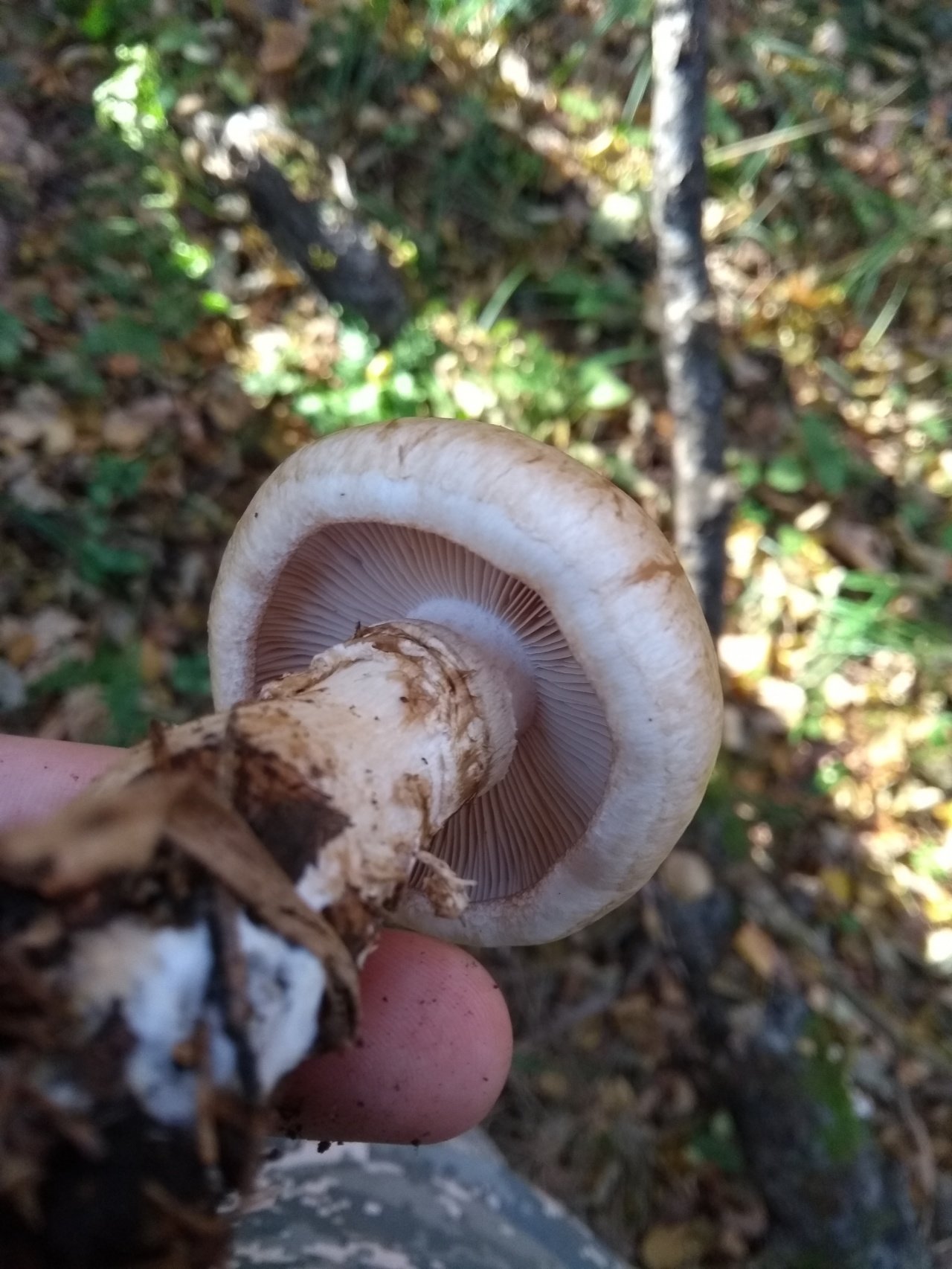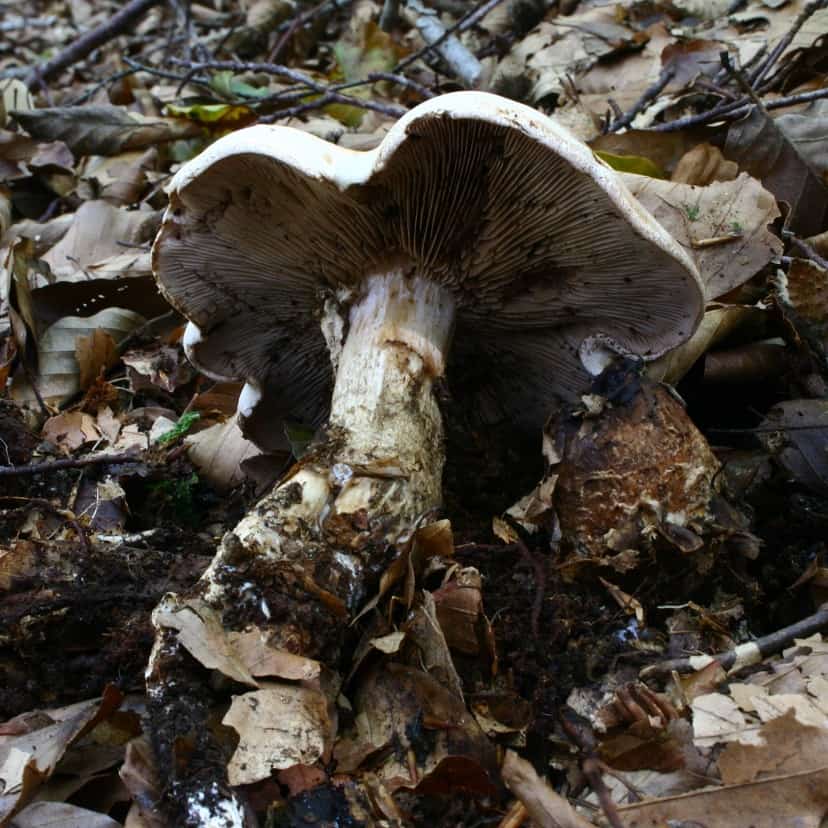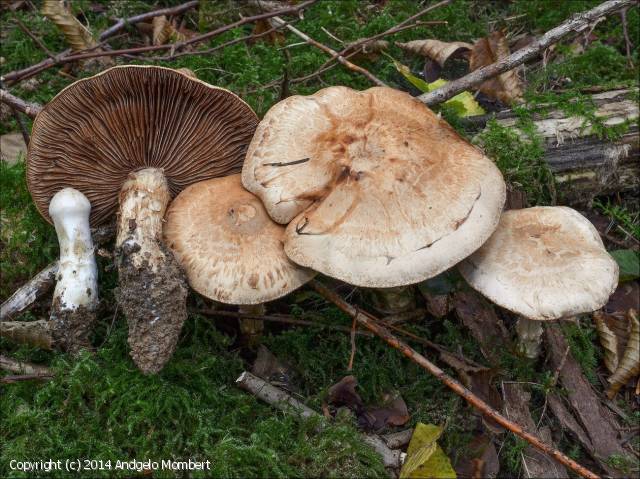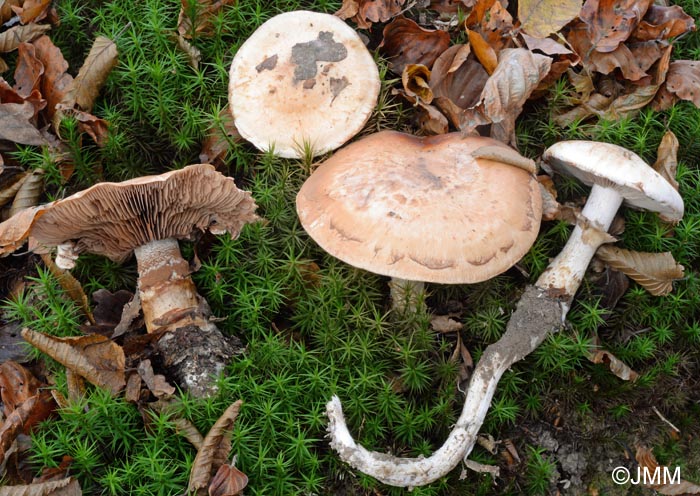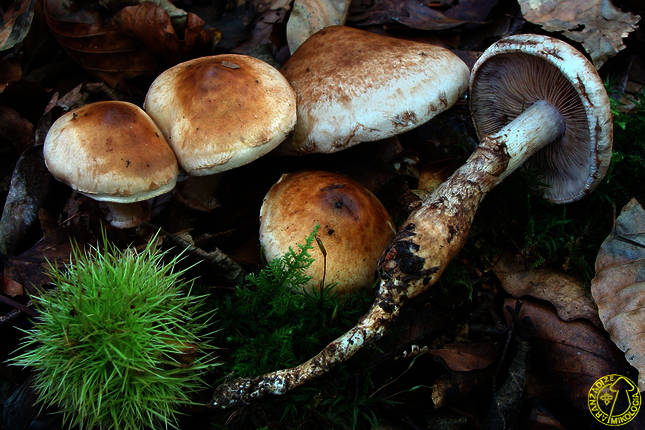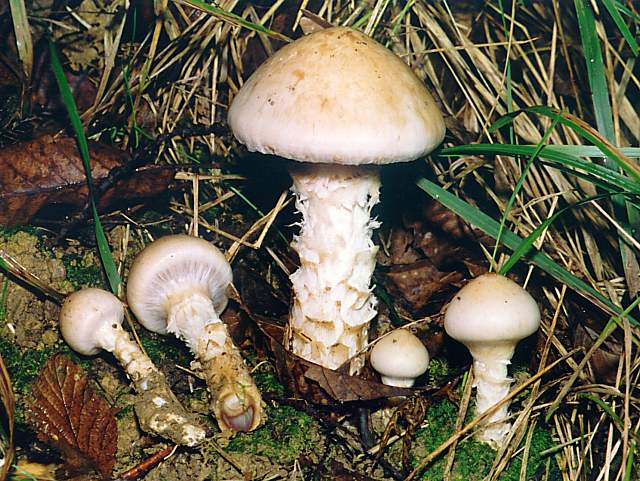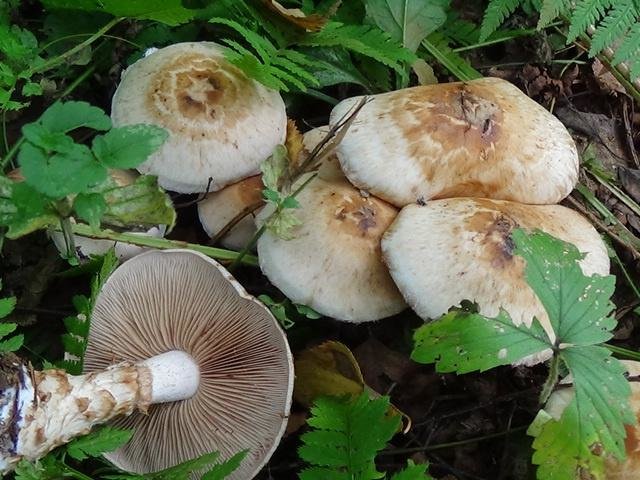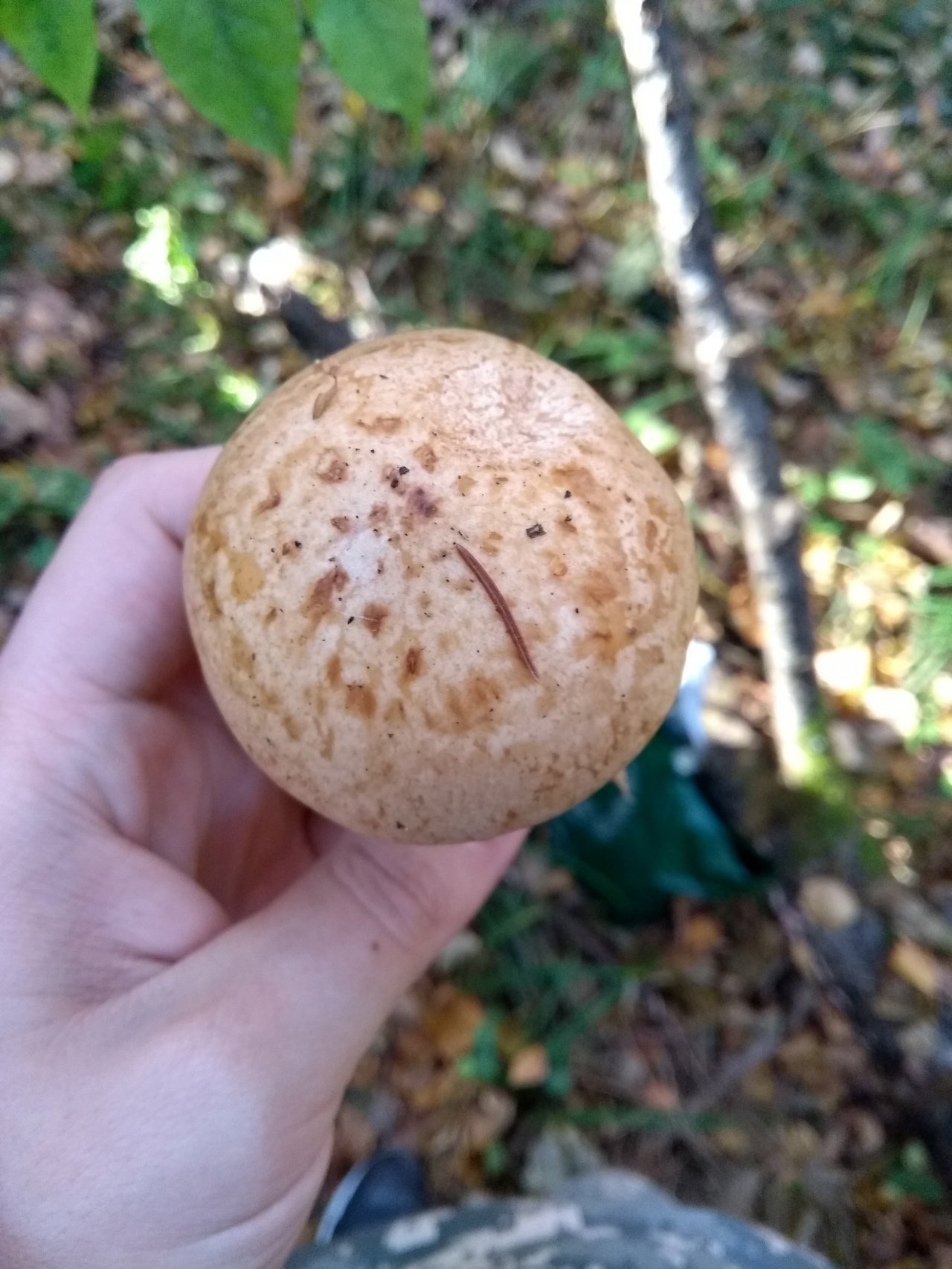Gebeloma
Mushrooms - Gebeloma
Gebelomas are cap-pedunculated mushrooms belonging to the stropharia family. Until recently, taxonomically, this genus of fungi was mistakenly attributed to other families of fungi: cobweb or bolbitium.
This genus includes several types of mushrooms. At the same time, some gebelomas are conditionally edible or inedible, and some are poisonous. Experienced mushroom pickers, having discovered these mushrooms, do not pay attention to them, because they have no practical value.
These mushrooms grow everywhere: on the soil, on rotten wood, in the places of former fireplaces. Fruiting in August-November.
Botanical description
Gebelomas belong to the cap-pedunculate fungi: their fruiting body consists of a cap and a leg. The Gebelom cap is flat or hemispherical, with a smooth or scaly shell of white or brown color. The diameter of different species of these mushrooms ranges from 3 to 9 cm. On the underside of the cap there are attached light or brown plates. Spore powder is colored with different shades of brown.
The cylindrical fibrous stems are located centrally in relation to the cap. The inside of the leg can be hollow, and on top it is often covered with scales. On the stem closer to the cap, many representatives of this genus have a spider-like or filmy ring.
The flesh of the mushroom is fleshy, firm, white or brown in color, and tastes bitter. On the cut, the pulp does not change its color and exudes a strong specific aroma, similar to the smell of a radish.
Species differences
The genus Gebelome includes several dozen species. The most common of them on the territory of Russia are the types: sticky, mustard, root, inaccessible, belted and coal-loving.
Hebeloma sticky
Mushrooms of this species are the most common gebelomas in our country. Russian mushroom pickers call them "horseradish mushrooms" or false values, and in England they are called "fairy cake" or "poisonous cake". They are referred to as inedible, and in some literary sources - to poisonous mushrooms.
False value hats are yellow-brown, sticky in young and dry in mature individuals. The size of the caps of some specimens reaches 10 cm. On the back of the caps in humid weather, moisture accumulates on the plates, which, after drying, gives them a spotty color. The pulp is light brown with a sharp rare odor and bitter taste.
Mushrooms of a sticky species grow in groups on the edges, glades, along the roads. Distributed throughout the European part of Russia, in the Far East, in Central Asia.
Mustard Hebeloma
It is a poisonous species of Gebelom. Their name comes from the fact that when ripe, the plates on the back of the caps acquire a mustard color.
Their caps have wavy edges. In size, they can reach 15 cm. The color of the caps varies from cream to brown-red, while the edges are colored lighter than the center. The spore powder has a bright orange color.
The legs are hollow inside; on a longitudinal section in their upper part, you can see the connection between the cavities inside the cap and the leg. The legs are covered with scales in such a way that they create a ring pattern on them.
Coniferous and deciduous forests are a favorite growing place for mustard gebelom. They grow in numerous groups.
Root Gebeloma (tapered)
These representatives of the genus Gebelom are conditionally edible: some cooks cook them together with edible mushrooms. The legs of the root gebel are half submerged in the soil, creating a semblance of a root. Because of this feature, the mushrooms of the root species got their name.
Their caps are large (up to 15 cm in diameter), hemispherical, light brown in color. The surface of the cap is covered with darker scales, resulting in a pockmarked appearance.The plates are semi-adherent, colored in different shades of gray and brown, while in young specimens they are lighter than in mature ones. The pulp is dense, light, has a bitter taste and an almond smell.
They love to grow in deciduous forests, because they form mycorrhiza with deciduous trees. Most often they can be found in places with a bald topsoil: in pits, ditches, near burrows.
Gebeloma inaccessible
It is a poisonous mushroom. Has a hat with a diameter of 4 to 8 cm with an indentation in the center. The surface of the cap is slimy, reddish in color, with a wavy edge. The plates are wide, with light margins. The pulp has a bitter taste and a pronounced radish smell. The leg is covered with scales, thickened at the base.
They grow on moist soils of coniferous, deciduous and mixed forests, abandoned gardens, rarely visited corners of parks and squares. Ripen in August-September.
Description of a false value with a photo
Look carefully at the photo of the false value (gebeloma). As you can see, it is quite difficult to distinguish this rather strong and edible mushroom in appearance. It successfully disguises itself as the russula types we are used to.
From the description of the false value, one can single out the main characteristics of its appearance and structure. This is a massive, strong cap that can grow up to 10 cm in diameter during the entire growing season. As a rule, in a large colony, you can immediately find a variety of specimens in which the cap sizes will range from 2 to 8 cm. Older specimens have a cracked cap surface. As it ages, the mushroom literally crumbles into dust.
The outer surface of the cap has a convex shape. Covered with a thin, smooth film of light brown color with a yellowish tint. A darker spot can be seen in the center.
On the reverse side of the cap, wide massive plates with a brown tint are visible. Dark spots are clearly visible on them. In wet weather, in place of these spots, accumulations of liquid form, which are easy to detect in the form of water droplets with the naked eye. When the spore powder matures, peculiar brown furrows are formed.
When the cap breaks, white flesh with a creamy tint is visible. The taste is unpleasant, bitter. It emits a characteristic smell of horseradish or rotten radish.
The stem of the mushroom is strong and hollow inside. Milky liquid does not stand out on the cut. The color of the leg is white, cream. The maximum length reaches 7 cm. It can be covered with a thin layer of light scales.
Unlike edible types of mushrooms, Faluy is never affected by pests and is never wormy.
Hebeloma tapered (Hebeloma radicosum)
Other names:
- Rooted hyfoloma
- Gifoloma rooting
- Agaricus radicosus
Hebeloma tapered or tapered (Latin Hebeloma radicosum) is a fungus of the Hebeloma genus of the Strophariaceae family. Previously, the genus belonged to the families Cortinariaceae and Bolbitiaceae. It is inedible due to its low taste, sometimes it is considered a low-value conditionally edible mushroom, suitable for consumption in limited quantities in combination with other mushrooms.
Root hebeloma hat:
Large, 8-15 cm in diameter; already in his youth takes on a characteristic "semi-convex" shape, which he does not part with until very old age. The color of the cap is gray-brown, lighter at the edges than in the center; the surface is covered with large, non-flaking scales of a darker color, which makes it appear "pockmarked". The pulp is thick and firm, whitish, with a bitter taste and almond aroma.
Plates:
Frequent, loose or semi-adherent; the color varies from light gray in youth to brown-clayey in adulthood.
Spore powder:
Yellowish brown.
Root hebeloma stem:
Height 10-20 cm, often curved, widening at the soil surface. A characteristic feature is a long and relatively thin "root process", from which the Hebeloma tapered and got its name. Color - light gray; the surface of the leg is densely covered with "trousers" of flakes, which slide down with age.
Spreading:
Occurs from mid-August to early October in forests of various types, forming mycorrhiza with deciduous trees; often hebele root can be found in places with damaged topsoil - in grooves and pits, near rodent burrows. In good years for oneself, it can come across in very large groups, in unsuccessful years, it can be absent altogether.
Similar species:
The large size and characteristic "root" do not allow confusing Hebeloma radicosum with any other species.
Edibility:
Apparently inedible, although not poisonous. Bitter flesh and the inaccessibility of "experimental material" do not allow any serious conclusions to be drawn on this score.
Remarks The mushroom is, without any exaggeration, magnificent. Huge, fleshy, dense and firm growing. Mushroom-extrovert: he climbs to get acquainted with the mushroom picker and does not dispose to delusions at his own expense. It's good that he is useless - if only they could see him, if someone needed him.
The danger of mushrooms
Despite the fact that not all types of gebelomas are poisonous, experienced mushroom pickers and doctors do not recommend eating even their conditionally edible comrades. The explanation for this negative attitude towards their use in cooking is simple. It consists in the fact that the differences between different types of gebel are very insignificant, therefore it is very easy to confuse conditionally edible mushrooms with poisonous specimens. Therefore, in order to avoid acute poisoning with Gebel toxins, it is better to refuse to collect them and eat them altogether.
Among the various types of these fungi, mustard hebeloma, inaccessible and coal-loving, can cause acute poisoning. As a rule, death does not occur when they are eaten by healthy people, however, acute disorders of digestion and cardiac activity can be observed.
If the victim has severe heart disease, gastrointestinal tract or kidney disease, the use of poisonous gebel can provoke a significant deterioration in their health and lead to death as a result of acute failure of the affected organs.
False doubles
The sticky hebeloma has several sibling species. They all belong to the same genus and are poisonous, inedible:
Coal-loving differs from Glueka Gebeloma in its small size, in the dark color of the cap, and most importantly - it loves to grow in the scorched areas of the forest, hence its name. This species is just as poisonous as the gummy one.
A belted gebeloma has a dark, often brown cap, but its stem is thinner. Unlike the sticky and coal-loving hebeloma, this type of fungus is not so poisonous. It even has good diuretic and diaphoretic properties, but still it is not worth collecting: it is too similar to its poisonous counterparts. Only an experienced specialist can correctly identify the species.
In mustard, the plates are more rare, the cap is not so sticky, it is slightly larger in size. Similar toxicity to gummy hebeloma.
There are a number of edible mushrooms that Gummy Gebeloma looks like. It is often confused with russula (Rússula) or champignon (Agaricus), as well as with valay (Russula foetens), hence the name of the mushroom - “false valui”.
The real Valui is also called the "stinking russula", and it really belongs to this family, while the Gebeloma belongs to a completely different genus. Unlike valuy, the leg of the gebeloma is covered with scales, while its leg is completely smooth.
While it is warm in the forest, the pungent unpleasant smell that distinguishes the false valui from the noble mushrooms is well felt, and mushroom pickers can easily identify the poisonous one. If it starts to get colder in November, then the smell is almost imperceptible, then you can make a mistake with the choice. Most often this happens with inexperienced mushroom pickers.
Gebeloma inaccessible: is it possible to eat, description and photo
| Name: | Gebeloma inaccessible |
| Latin name: | Hebeloma fastibile |
| Type of: | Inedible, Poisonous |
| Systematics: |
|
Gebeloma inaccessible is a common lamellar mushroom of the Hymenogastric family. The fruit body has a classic shape with a pronounced cap and stem. This species prefers to grow in moist soils. The official name is Hebeloma fastibile.
What does hebeloma inaccessible look like?
The cap in young specimens is hemispherical, but as it grows it becomes prostrate, slightly depressed in the center. Its diameter reaches from 4 to 8 cm. The surface is mucous. There is a fibrous fringe along the edge of the cap. The upper part of the gebeloma is inaccessible to an initially reddish hue, and whitens when ripe. On the reverse side, there are wide rare plates of a whitish shade.
The leg of the inaccessible hebeloma is cylindrical, often spindle-shaped with a thickening at the base. Its height reaches 6-10 cm, and its thickness is 1.5-2 cm. White scales can be seen on the upper part. In young mushrooms, the leg has a dense consistency, but becomes hollow during the ripening period. It has a barely noticeable flaky ring. The shade of the lower and upper parts of the mushroom is identical.
Disputes in hebeloma are inaccessible oval or elliptical in shape. Their size is 7.4-10.4 x 4.5-6.3 microns.
Where Gebeloma grows inaccessible
This species grows everywhere on moist soil, less often on rotting wood. Inaccessible gebele can be found in coniferous, deciduous forests, and in mixed plantings. And also it can grow in a park area, a public garden and an abandoned garden in the presence of favorable conditions for growth.
The ripening period begins at the end of August and lasts all September. Gebeloma inaccessible grows in group plantings.
This species grows throughout the European part of Russia, the Far East and Siberia.
Is it possible to eat the inaccessible gebel
This species belongs to the category of poisonous mushrooms due to the high content of toxins that cause disorders of the digestive system and disrupt cardiac activity. With the provision of timely medical care, recovery occurs 2-3 days after poisoning.
Poisoning symptoms
Signs of intoxication of the body can manifest themselves in different ways, depending on the state of human health, the amount of mushrooms eaten.
Common symptoms of inaccessible gebeloma poisoning:
- nausea;
- bouts of vomiting;
- pain in the abdomen;
- loose stools;
- visual impairment;
- headache;
- high temperature;
- low pressure;
- general weakness.
With a slight deterioration in well-being, unpleasant symptoms persist for 2-3 days and go away on their own. In severe cases, urgent medical attention and hospitalization are required.
First aid for poisoning
With a significant deterioration in health after eating mushrooms, you need to immediately call an ambulance.
While waiting for the doctor, you need to induce vomiting to clear the stomach of the remains of questionable food. Then drink activated charcoal at the rate of 1-2 tablets for every 10 kg of weight. And if possible, do an enema.
Conclusion
Gebeloma inaccessible is a dangerous mushroom that is recommended to be avoided. Therefore, you should learn to distinguish between edible and poisonous species so as not to harm your health.
In case of doubt, it is better to refuse to collect mushrooms, and if alarming symptoms of poisoning appear, provide first aid to the patient.
Gebeloma belted
Taxonomy on Wikisource
Images at Wikimedia Commons
| NCBI 36063 |
Gebelome belted lat Hebelóma mesophaéum - a mushroom of the genus Hebeloma Hebeloma of the family Spiderweb Cortinariaceae Previously, the genus was attributed to the families Strophariaceae Strophariaceae and Bolbitiaceae Bolbitiaceae Edible, but we do not recommend it for consumption due to difficulties in determining
- Agaricus fastibilis subsp mesophaeus Pers, 1828 basionym
- Inocybe mesophaea Pers P Karst, 1879
- Agaricus mesophaeus Pers Fr, 1838
- Inocybe versipellis var mesophaeus PersS Petersen, 1911
Descriptionedit | edit code
Hat 4-9 cm in diameter, from broadly conical to almost flat, with a tubercle Slightly sticky skin, chestnut brown in the center, lighter towards the edges
The pulp is thin, soft, whitish or light brown, brownish in the lower part of the leg, with a bitter taste and a rare odor
The leg is 4-7 cm high and 0.5-1 cm in diameter, straight or curved, hollow, the base is slightly widened The color of the leg is whitish, brown in the lower part
Plates are frequent, adherent with a tooth, pinkish-brown
Remains of veils In young mushrooms, the plates are covered with a cobweb blanket by a cortina, which sometimes leaves a light brown annular zone in the middle of the stem; white scraps can also be noticeable along the edges of the cap
Brown spore powder, spores 9 × 5.5 μm, almond-shaped, linear-folded
Ecology and distributionedit | edit code
Forms mycorrhiza with various trees, occurs in coniferous, deciduous and mixed forests, often under birches, in parks and gardens, in places with grassy cover Sometimes occurs in wildfires Fruiting in groups
Season late summer - autumn
Literature edit code
- Mushrooms: A Handbook / Per s Italian F Dvin - M: "Astrel", "AST", 2001 - C 159 - ISBN 5-17-009961-4
- Lesso T Mushrooms, key / lane from English L V Garibova, SN Lekomtseva - M: "Astrel", "AST", 2003 - C 93 - ISBN 5-17-020333-0
- Harding P Mushrooms / Translated from English by DS Shchigel - M: "Astrel", "AST", 2002 - C 128 - ISBN 5-17-011765-5
- Serzhanina GI Hat mushrooms of Belarus - Minsk: Science and technology, 1984
Gebeloma belted Comments
Gebeloma belted beatiful post thanks!
Gebeloma with girdleGebeloma with girdle Gebeloma with girdle You are viewing subject
There are excerpts from wikipedia on this article and video



